We use information collected through cookies and similar technologies to improve your experience on our site, analyze how you use it and for marketing purposes.
Your privacy settings
We and our partners use information collected through cookies and similar technologies to improve your experience on our site, analyze how you use it and for marketing purposes. Because we respect your right to privacy, you can choose not to allow some types of cookies. However, blocking some types of cookies may impact your experience of the site and the services we are able to offer. In some cases, data obtained from cookies is shared with third parties for analytics or marketing reasons. You can exercise your right to opt-out of that sharing at any time by disabling cookies.
Manage Consent Preferences
Necessary
Always ON
These cookies and scripts are necessary for the website to function and cannot be switched off. They are usually only set in response to actions made by you which amount to a request for services, such as setting your privacy preferences, logging in or filling in forms. You can set your browser to block oralert you about these cookies, but some parts of the site will not then work. These cookies do not store any personally identifiable information.
Analytics
These cookies and scripts allow us to count visits and traffic sources, so we can measure and improve the performance of our site. They help us know which pages are the most and least popular and see how visitors move around the site. All information these cookies collect is aggregated and therefore anonymous. If you do not allow these cookies and scripts, we will not know when you have visited our site.
Embedded Videos
These cookies and scripts may be set through our site by external video hosting services likeYouTube or Vimeo. They may be used to deliver video content on our website. It's possible for the video provider to build a profile of your interests and show you relevant adverts on this or other websites. They do not directly store personal information, but are based on uniquely identifying your browser and internet device. If you do not allow these cookies or scripts it is possible that embedded video will not function as expected.
Google Fonts
Google Fonts is a font embedding service library. Google Fonts are stored on Google's CDN. The Google Fonts API is designed to limit the collection, storage, and use of end-user data to only what is needed to serve fonts efficiently. Use of Google Fonts API is unauthenticated. No cookies are sent by website visitors to the Google Fonts API. Requests to the Google Fonts API are made to resource-specific domains, such as fonts.googleapis.com or fonts.gstatic.com. This means your font requests are separate from and don't contain any credentials you send to google.com while using other Google services that are authenticated, such as Gmail.
Marketing
These cookies and scripts may be set through our site by our advertising partners. They may be used by those companies to build a profile of your interests and show you relevant adverts on other sites. They do not store directly personal information, but are based on uniquely identifying your browser and internet device. If you do not allow these cookies and scripts, you will experience less targeted advertising.
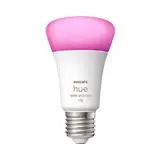
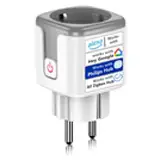
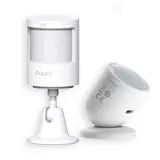
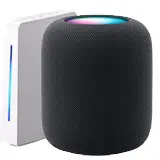
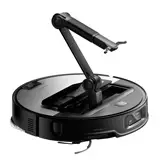

Smart thermostats: how to save up to 30% on heating
Tired of sky-high heating bills that make you shiver more than winter itself? There's a smart solution that might be waiting for you: the smart thermostat. Not only does it let you control your home's temperature from anywhere, but it can also help you save up to 30% on your heating costs. Find out how this little device can transform your home and your wallet.
What is a Smart Thermostat?
A smart thermostat is a device that learns your heating and cooling habits. Unlike traditional thermostats, which simply maintain a fixed temperature, smart thermostats use algorithms and sensors to optimize energy use. They control your home's temperature more efficiently, adapting to your needs and preferences.
Traditional thermostat vs. Smart thermostat
What's the difference between a regular thermostat and a smart one?
The key is automation and learning. A traditional thermostat needs you to constantly adjust it. A smart thermostat does it for you.
How does a smart thermostat save on heating?
The magic of a smart thermostat lies in its ability to optimize energy use. Here's how it does it:
By optimizing heating usage, smart thermostats reduce energy waste, thereby lowering your bills.
Practical example of saving
Imagine you leave your house at 8:00 AM and return at 6:00 PM. A traditional thermostat would keep the house warm all day, using unnecessary energy. A smart thermostat, on the other hand, would automatically lower the temperature at 8:00 AM and raise it again shortly before 6:00 PM. That simple adjustment can generate significant savings over time.
Benefits of Using a Smart Thermostat
Beyond saving money, smart thermostats offer a range of advantages that make them a worthwhile investment:
Comparison table of popular smart thermostats
These prices are approximate and may vary depending on the retailer and available offers.
How to Choose the Right Smart Thermostat
With so many options available on the market, choosing the right smart thermostat can seem overwhelming. Here are some factors to consider:
Further considerations
Before buying a smart thermostat, keep the following in mind:
Installing a Smart Thermostat
Installing a smart thermostat is usually a straightforward process, but it's important to follow the manufacturer's instructions carefully. In many cases, you can do it yourself, but if you're not comfortable working with electrical wires, it's best to hire a professional.
Basic Installation Steps
If you're unsure how to do the installation, consult a qualified electrician.
Recommendations and Best Practices for Maximizing Savings
To get the most out of your smart thermostat and maximize heating savings, follow these tips:
Additional tips for saving energy
Here are some extra tips to lower your heating costs:
Conclusion: A Smart Home, a Happy Wallet
Smart thermostats are a smart investment that can help you save money, improve your home's comfort, and contribute to the environment. By automating temperature control, these devices optimize energy use and reduce waste. Don't wait any longer to enjoy the benefits of a smart home. Consider installing a smart thermostat and start saving up to 30% on your heating bills. Share this article with your friends and family so they can benefit from this technology too!
Related Posts
What are the safest smart heaters for children?
Worried about keeping your kids warm this winter? That's normal! But safety comes first, especially when we're talking about heaters. Finding a safe smart heater for kids may seem complicated, but don't worry, we're here to help. We'll explore the best options, safety features and tips to keep your home warm ...
How to control your home's temperature remotely
Imagine coming home after a long day and finding the perfect temperature, regardless of the weather outside. Sound like science fiction? Not anymore. Controlling your home's temperature remotely is an affordable reality that offers convenience, energy savings and greater control over your environment. Why control ...
Smart blinds vs. motorized curtains: which option is better?
Tired of getting up to adjust your curtains or blinds? Home automation offers you stylish and practical solutions. Two of the most popular options are smart blinds and motorized shades. But which one is best for you? This article will walk you through the key differences, advantages and disadvantages, and ...
How to choose a smart air conditioner or convert a regular one?
Tired of the sweltering summer heat? Dreaming of controlling your home's temperature from your smartphone? The good news is that you can enjoy a cool, connected environment even without spending a fortune on a brand new air conditioner. In this article, we'll walk you through a step-by-step guide to choosing the smart air conditioner ...